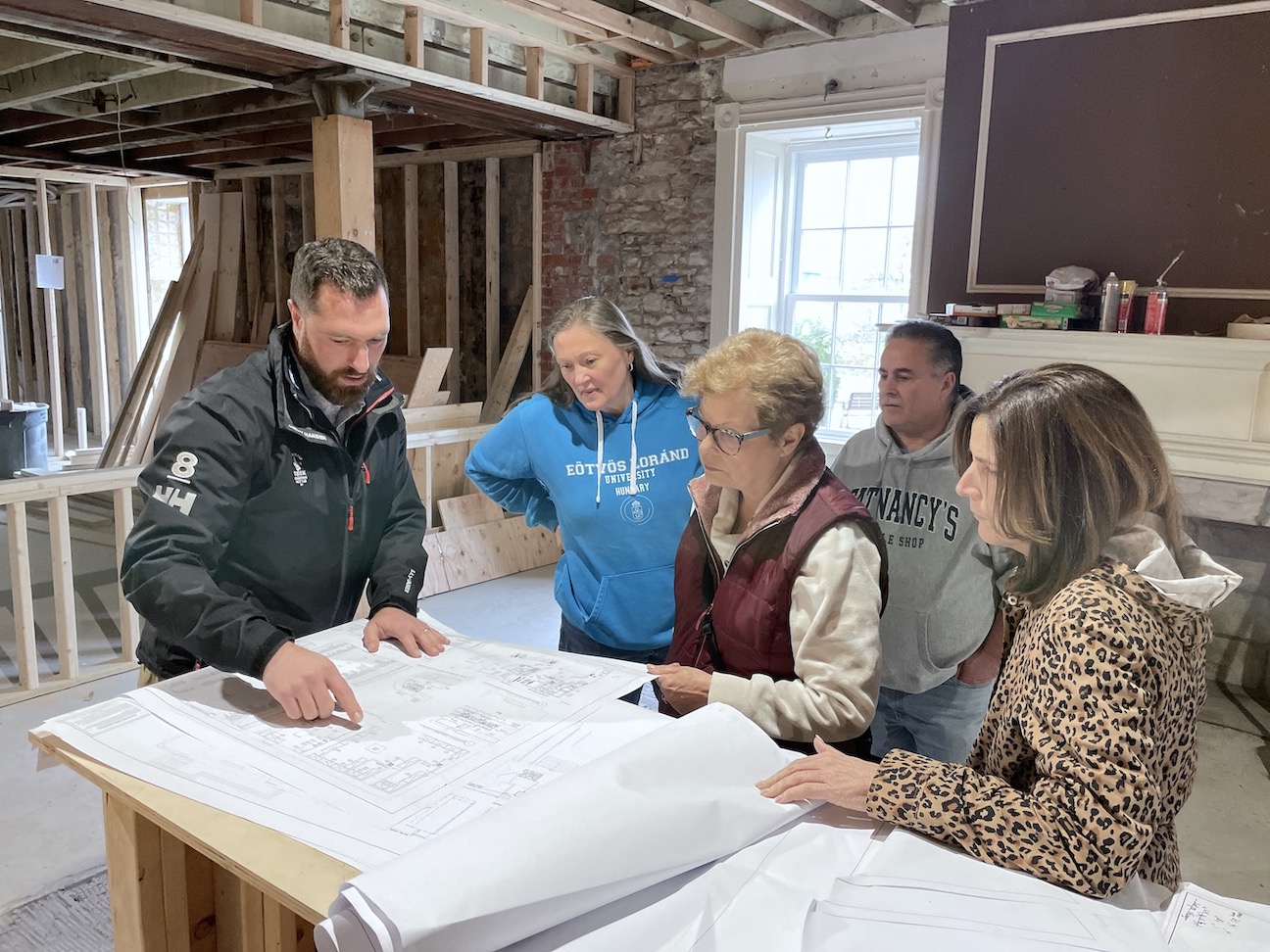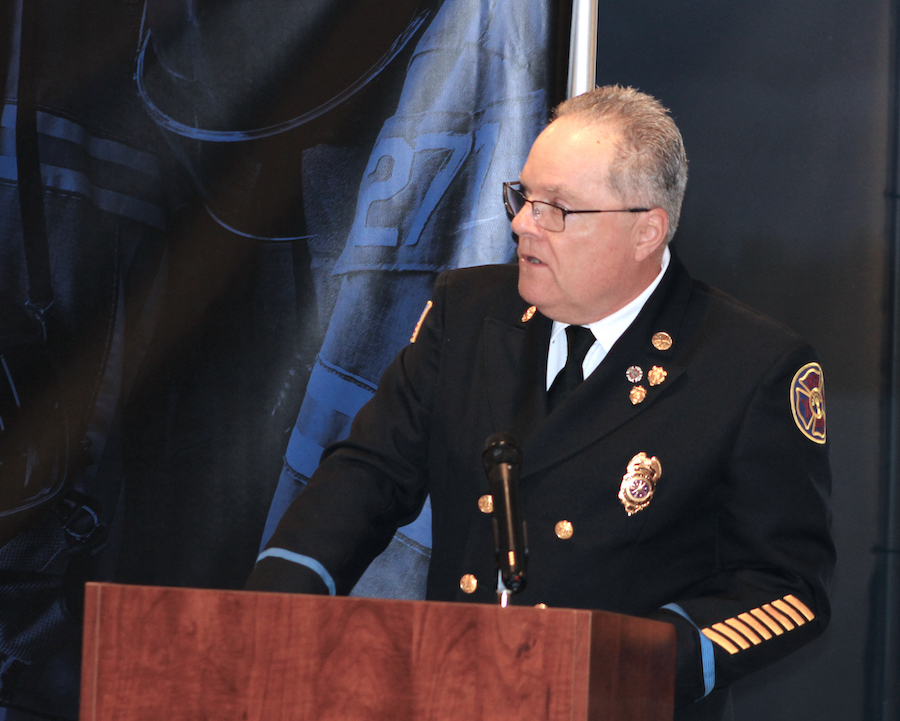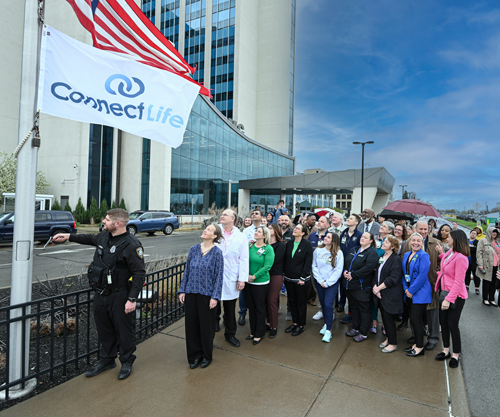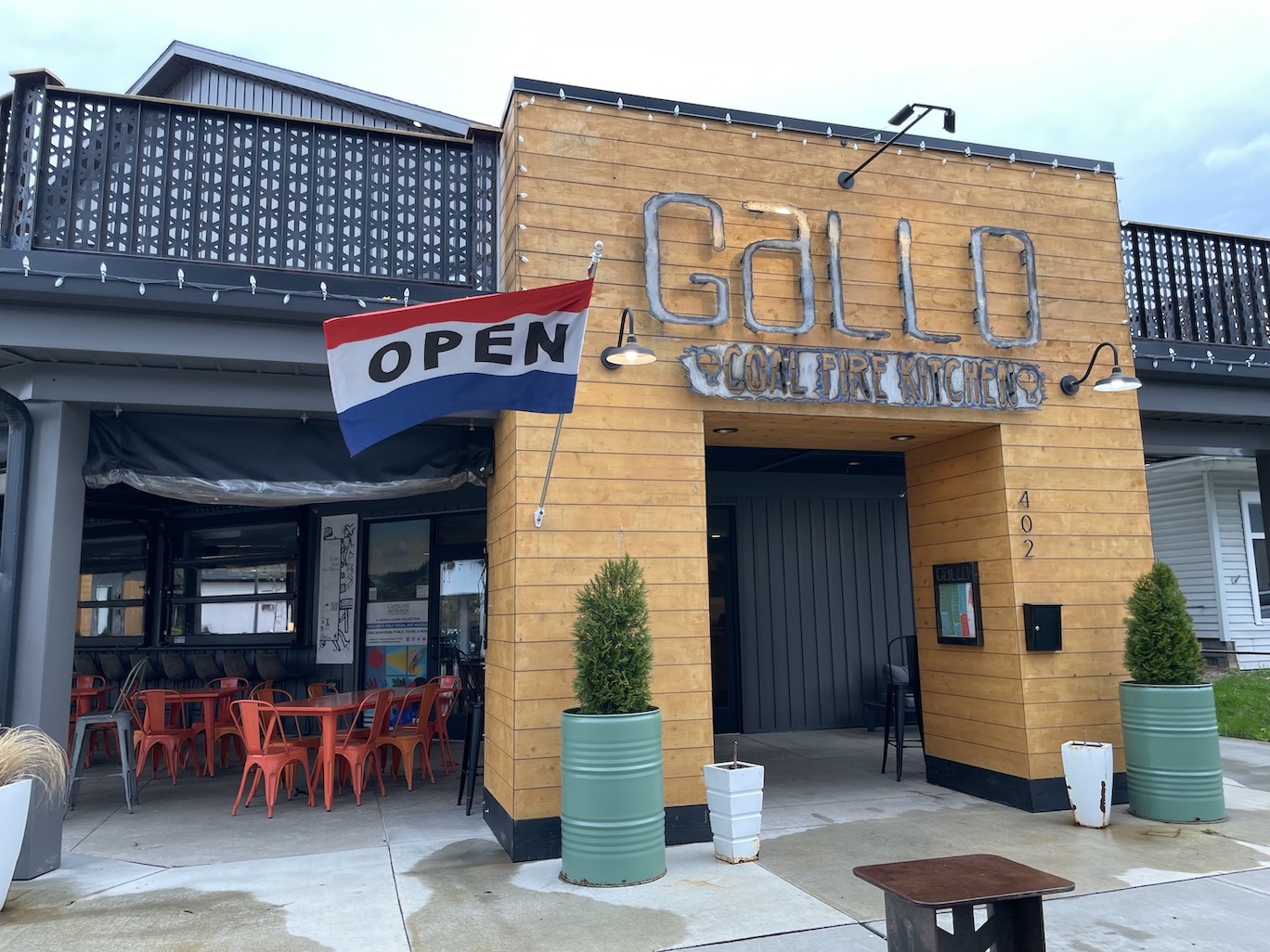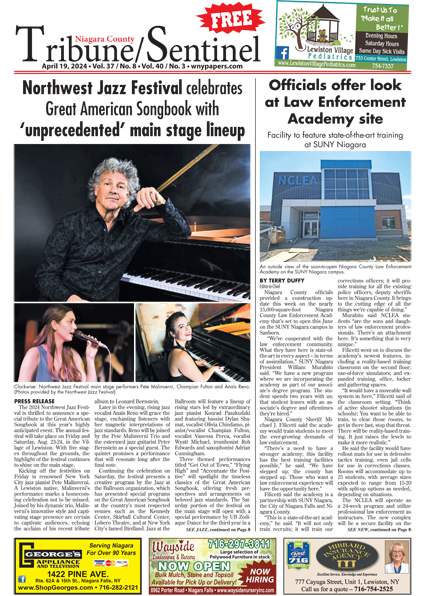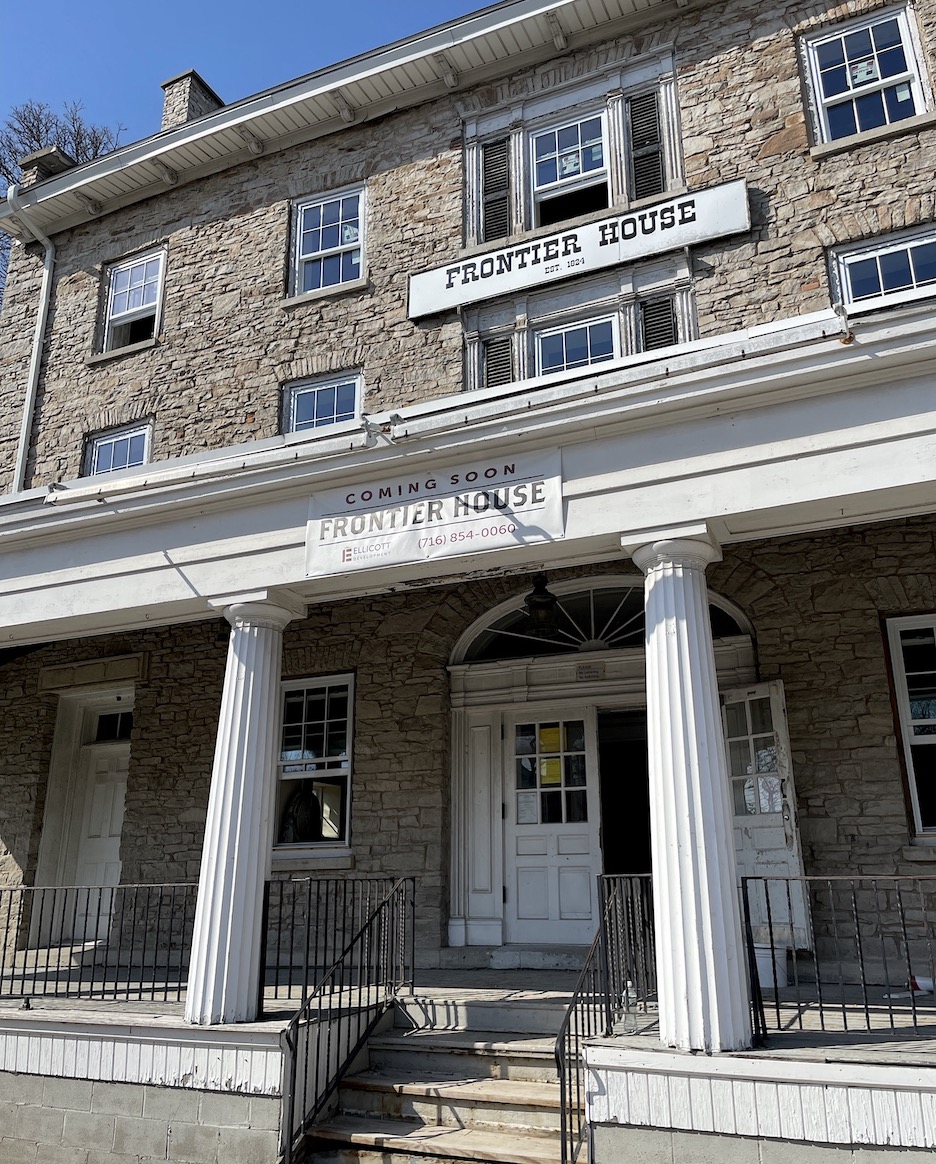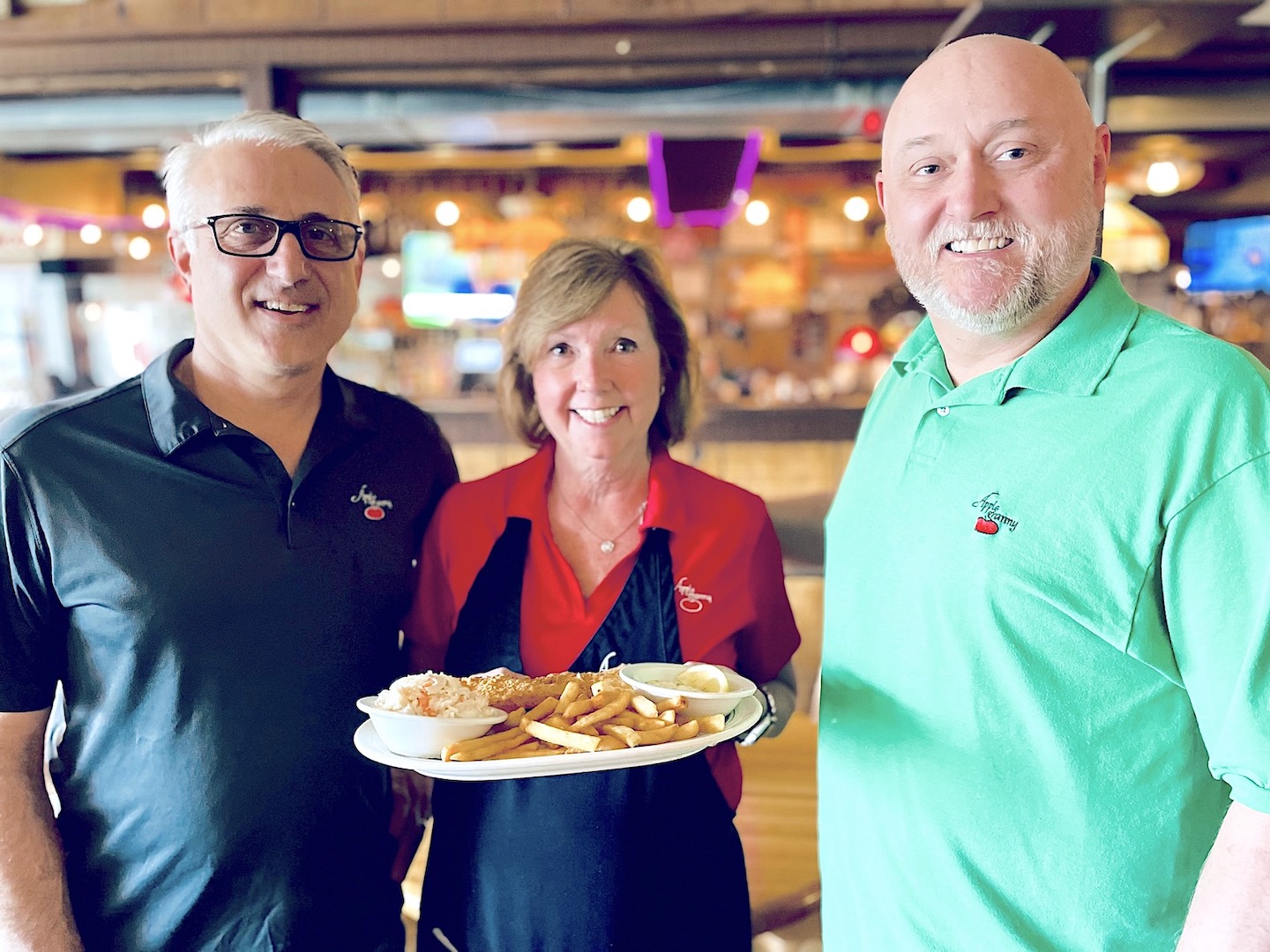Featured News - Current News - Archived News - News Categories
A big family, a storied Island history
By Karen Carr Keefe
One of Bernice Stack Dinsmore's early memories is of riding to St. Stephen R.C. Church in a horse-drawn logging sled because there was too much snow on the roads for the horse-and-buggy to handle. Her dad hitched up the horses, the family piled in and then they picked up the Bartrams and the Stamlers, and they all rode to church together. That's just the way they rolled back then on Grand Island.
Born in 1919 on Grand Island, the fourth of 11 children, Bernice grew up on a 40-acre farm on Whitehaven Road. Her parents, Patrick Stack and Agnes Kobel Stack, instilled the values of education and hard work. All but two of the kids went to college. Bernice attended State Teachers College in Buffalo, intending to be a schoolteacher.
Bernice, a lifelong Island resident, has written down many of her memories for the Grand Island Historical Society and told different audiences about how it was back then. Now, at 95 and hard of hearing, she is a woman of fewer words, but the stories she has written - and those told for her through her son, Jim, also an Islander - painted a fascinating portrait of the Island at the Dispatch-sponsored forum, "Before the Bridges," last year. Bernice, her son, Jim, and daughter Jeanne Marie Ensminger attended the luncheon and panel discussion.
Bernice and her husband, the late Donald Dinsmore, met at a barn dance on the Pfohl property. Don had plenty of competition for her affection, as the story goes. After that first barn dance, he called Bernice up for a date and they went to a St. Stephen card party and dance. It became obvious that Don preferred the card playing to the dancing. There was about an hour set aside for card playing. But when it was time for dancing, Don kept playing cards, leaving his date alone to socialize. He discovered that while he was watching the cards, the other boys were watching Bernice. She had promised most of her dances to other boys, and one of them told everyone that Bernice was the most beautiful girl on Grand Island. Don and Bernice dated for a while, and then stopped dating for several years. But eventually, that beautiful girl became his wife.
What was it like growing up in a big family on a farm on Grand Island? Bernice has a one-word answer: "Hard!" But that didn't stop her from marrying a farmer and raising a big family of her own.
Bernice Dinsmore has traveled in her day, but the Island in the Niagara River has always been central in her life. In July 2009, she celebrated her 90th birthday with a cruise around the Island, along with more than 80 of her friends and relatives. The cruise was hosted by her six children: Peter Dinsmore of North Carolina, Jeanne Marie Ensminger (also a lifelong Island resident), Jim Dinsmore of the Island, Eugene Dinsmore of Syracuse, Donna Frantz of Clarence and Ed Dinsmore of Buffalo.
Growing up on the farm
"My father raised wheat, oats, buckwheat, hay and many vegetables," Bernice has written. "He had a team of horses, at least six cows and some pigs. He became foreman of the state roads on Grand Island until he retired," she said.
Their farm was on Whitehaven Road and had previously been owned by the Pettibone family. "Our house, enlarged from the original old plank house, was a two-story, white clapboard house with a cellar and cistern under it.
"There was a well on our property with the best drinking water around. It was very hard, so we needed the cistern, which collected rainwater from the roof for my mother to wash our clothes," Bernice wrote. "The house had a large living room, a dining room, kitchen, pantry, a bedroom downstairs and bedrooms upstairs."
According to an online account of the family's 2008 reunion, the Island Stack clan traces its settlement on the Island to Patrick Stack's father and grandfather, who moved here from Ireland in the 1850s to farm 40 acres along East River near Staley Road and Winkler Drive. It was these men who built the Stack homestead, still standing on the corner of Staley Road and East River, now in view of the twin South Grand Island bridges. Jim Dinsmore said his grandfather set up a blacksmith shop at that corner when a ferry service was started near there. "Of course, he used to service the farm horses when they were waiting for the ferry," Jim said.
Ferries carrying passengers, horses and then cars were still the means to the mainland when Bernice was growing up. "Of course, I rode the lower ferry to Tonawanda and the Fix brothers ferry to Buffalo many times," she said.
One-room schoolhouse
"I attended No. 11 school at the corner of Whitehaven and Harvey Road. It was one big room with a coal-fired heater in the center. There were two small coatrooms and a pail of drinking water by the front door. A short distance from the back, there were two out-houses. In the winter, there was ice in a small pond in the woods across the road where we could play or skate during lunch hour," she said.
In 1930, there were only Donald, Walter and Catherine Killian; Billy Kaegebein; Bernice and James Stack; and David Yensan attending, so they closed No. 11. "We were transported by car, either by Mr. Dilliot, Mrs. Yensan or Mr. or Mrs. Kaegebein, to No. 9 school. Lillian Grenzebach taught sixth, seventh and eighth grade in one room and Margaret DeGlopper taught the younger grades in what was referred to as the 'little room.' I don't remember the total number when I graduated from eighth grade and I went to Tonawanda High School, transported by bus by Henry Landel, bus driver."
Bernice recalls that the four Killian kids, including her fellow panelist Catherine Killian Long, had to walk against the wind on their way to school, while the Stack kids had the wind at their back, according to Bernice's son, Jim. "So they were lucky, and the Killian kids were frozen," Jim joked, as Bernice nodded her head in agreement.
When Bernice was a little girl, she used to spend weekends on Orchard Road in Ferry Village at her Uncle Eugene's and Aunt Bertha's house. "All the time, I was up there," Bernice added. Ferry Village was the first part of Grand Island to get electricity, water and gas, Jim Dinsmore said. Uncle Eugene had a gas well, and he sold gas to the neighbors so they could heat their homes. "The pump apparatus is still on that property on Cox Road - all rusted up, of course," Jim said.
Bernice's Uncle Eugene also delivered mail. "So he would pick up mail in the morning - and I believe he picked it up at Tucker's (store) or somewhere they had a little post office," Jim said. As Eugene delivered the mail on Mondays, he would drop Bernice off at School No. 11. "But she was always late for school that day. She was a good student, so nobody objected," Jim said of his mom.
"Tell them what happened, that the teacher made a rule that everybody had to come on time," Jim coaxed his mom.
"Billy Kaegebein was the problem," Bernice confided, with a laugh and a wave of her hand. "Billy Kaegebein lived right near the school, but he couldn't get up in the morning!" Jim added. "So the teacher had to make a rule that everybody come on time." To comply with the rule, Uncle Eugene had to start taking Bernice to her parents' on Whitehaven Road on Sunday night, instead of Monday mornings, so the rule spoiled her weekend, she said. "She never liked Billy Kaegebein much after that," Jim quipped.
Growing up with eight brothers, Bernice has humorous stories of the trouble they could get into. In one such tale, Charlie got into mischief, so Principal Veronica Connor kept him after school one night, as Jim tells it. "So when she let him go home, he said, well if he's going to walk home, so is she. He let the air out of her car tires." That put a crimp in her daily trip home to Ransomville from Grand Island.
Most of the Island kids went to high school in Tonawanda, back in Bernice's day, since there was no high school here. From time to time, the students could get stuck across the river when winter storms kept the ferry from running. So each of the Island students had to have a family they could stay with overnight in Tonawanda, in case that happened or if they missed the last ferry at 6 p.m.
Telephones, radios, retail
When Bernice was young, media access was vastly different than today, and kids were neither the target audience nor the main purveyors of the day's communications.
"I think I was 10 when we got our first radio. I remember 'Myrt and Marge,' " Bernice said. The popular 15-minute radio program, broadcast from 1931-42, was sponsored by Wrigley's chewing gum. The show was created by Myrtle Vail, based on her vaudeville experience. The actress named her lead characters: Myrtle Spear and Marge Minter, playing off the company's best-known gum, spearmint.
"We shopped at Schutt's (on Grand Island), at the A&P in Tonawanda (at one time they delivered on Grand Island). We also shopped on Tonawanda Street in Riverside, and sometimes in the summer, peddlers came and sold on Whitehaven Road," Bernice said.
"I don't remember when we got our first phone," Bernice said. "I remember the party line. We children never talked on the phone." The phones back then had a crank. "In my married life, I didn't have a phone until the dial phones were installed on my section of Whitehaven Road."
Bernice's daughter, Donna Frantz, said the house her family moved into on Whitehaven in 1947 was part of her father's and mother's farm.
Harvest picnic hijinks
"Harvest Picnic was a must," Bernice recalled. "They usually alternated between Edgewater and the Bedell House. There was always a tug-of-war between the 'head' and the 'foot' of the Island and foot races for kids of all ages. One year, the Home Bureau served dinners in the Bedell House, but other years, each family had their own spot and ate their own feast. There was always dancing in the evening.
"One year, there was a contest held to see whether 'Babe,' Frank Smith's pony, or Ed Stack's pony, 'Sailor' was faster. Frank Smith had bragged so much about Babe while he and Frank Offermann were riding the ferry to go to work every day that Offermann (whose children were too young) bought a pony for Edward (Bernice's brother). Charlie Fix had observed how well Edward handled my father's team, so he hired Ed to handle his team for the summer.
"Charlie Fix and Frank Offermann were betting on Ed. Frank Fix was betting on Babe. The race was held in the Fix pasture. Babe was declared the winner, but enough questions were raised as to whether she had cut a corner that all bets were canceled. All was settled agreeably."
A bright smile lights the face of Bernice Stack Dinsmore as the stories of yesteryear unfold. It's a smile that she's known by, her friends say, and one that her large family treasures as they get together to reminisce and make new memories on Grand Island.
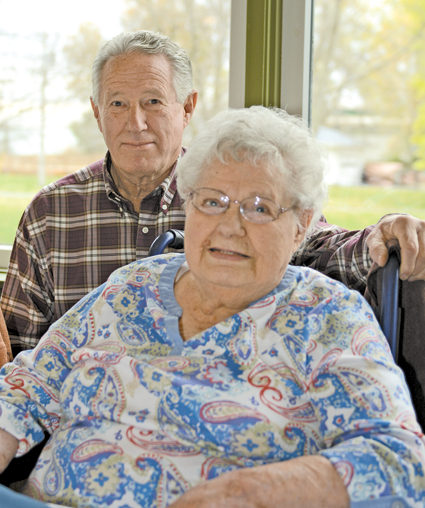
Bernice Stack Dinsmore and her son, Jim. (Credit K&D Action Photo & Aerial Imaging)
